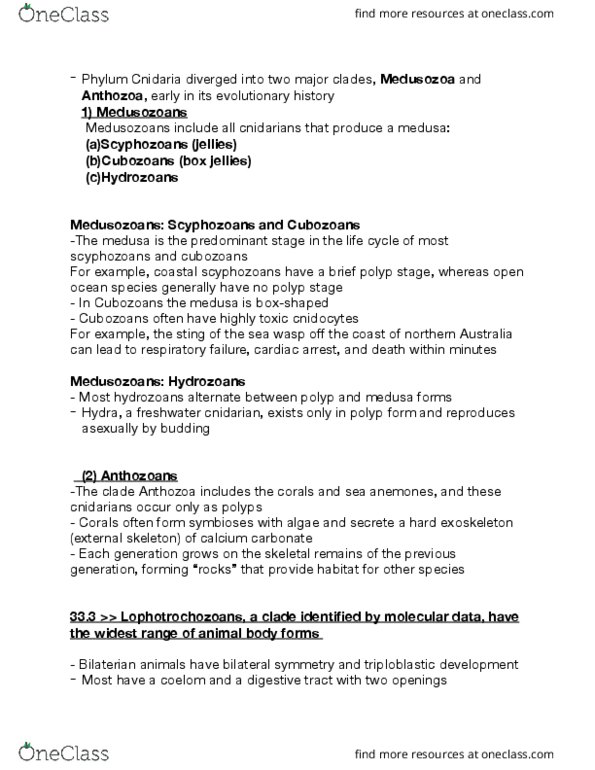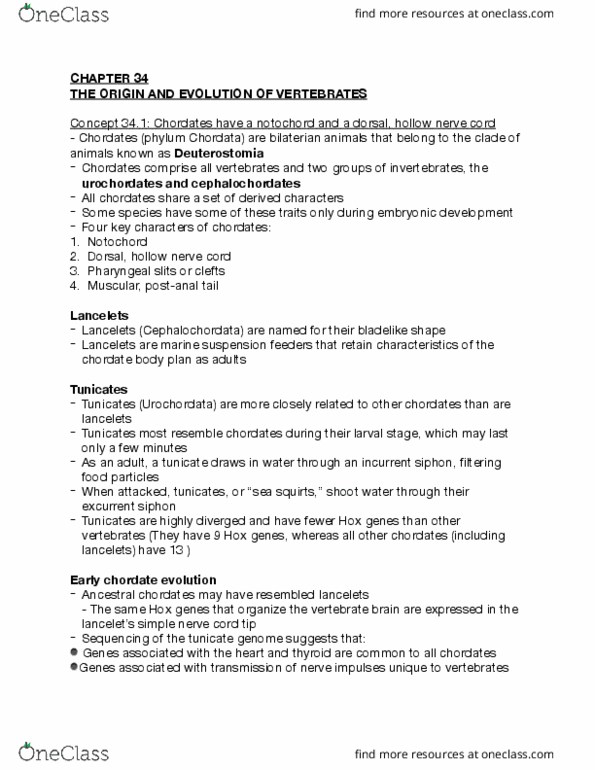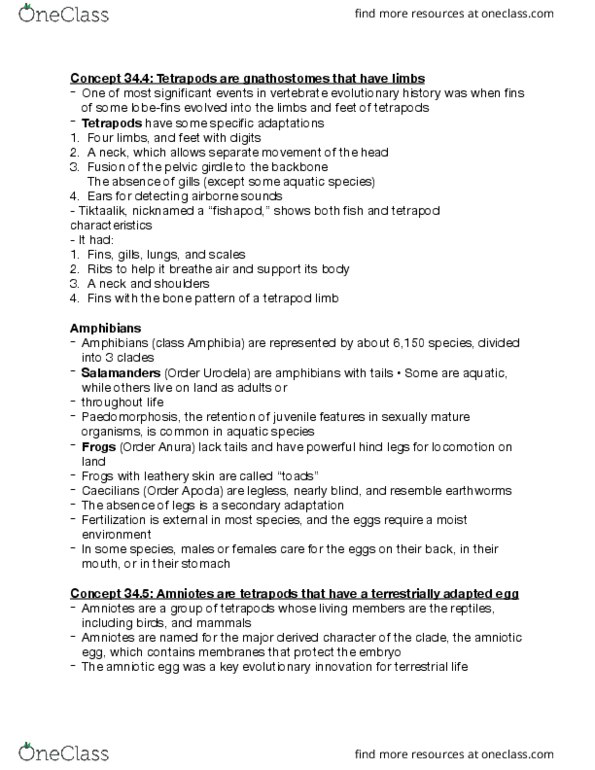BIOL 1030 Lecture 11: The Origin and evolution of vertebrates
BIOL 1030 verified notes
11/12View all
Document Summary
Concept 34. 1: chordates have a notochord and a dorsal, hollow nerve cord. Chordates (phylum chordata) are bilaterian animals that belong to the clade of animals known as deuterostomia. Chordates comprise all vertebrates and two groups of invertebrates, the urochordates and cephalochordates. All chordates share a set of derived characters. Some species have some of these traits only during embryonic development. Four key characters of chordates: notochord, dorsal, hollow nerve cord, pharyngeal slits or clefts, muscular, post-anal tail. Lancelets (cephalochordata) are named for their bladelike shape. Lancelets are marine suspension feeders that retain characteristics of the chordate body plan as adults. Tunicates (urochordata) are more closely related to other chordates than are lancelets. Tunicates most resemble chordates during their larval stage, which may last only a few minutes. As an adult, a tunicate draws in water through an incurrent siphon, ltering food particles. When attacked, tunicates, or sea squirts, shoot water through their excurrent siphon.




